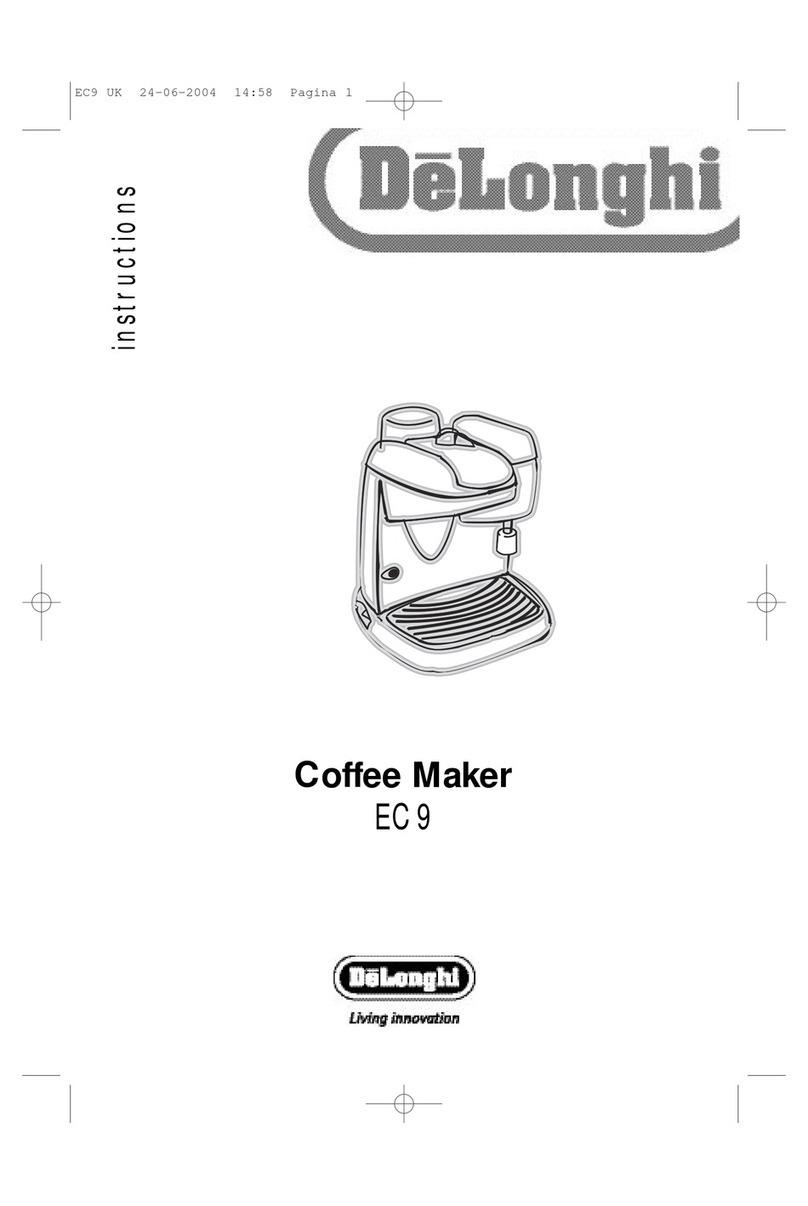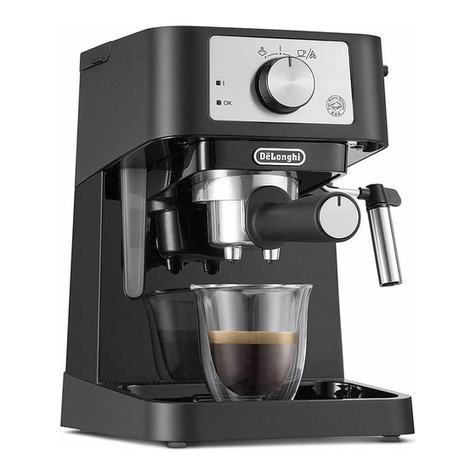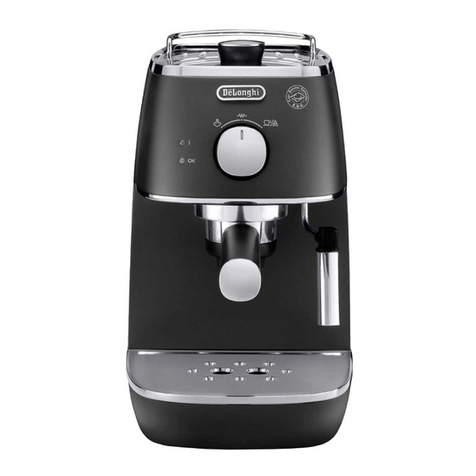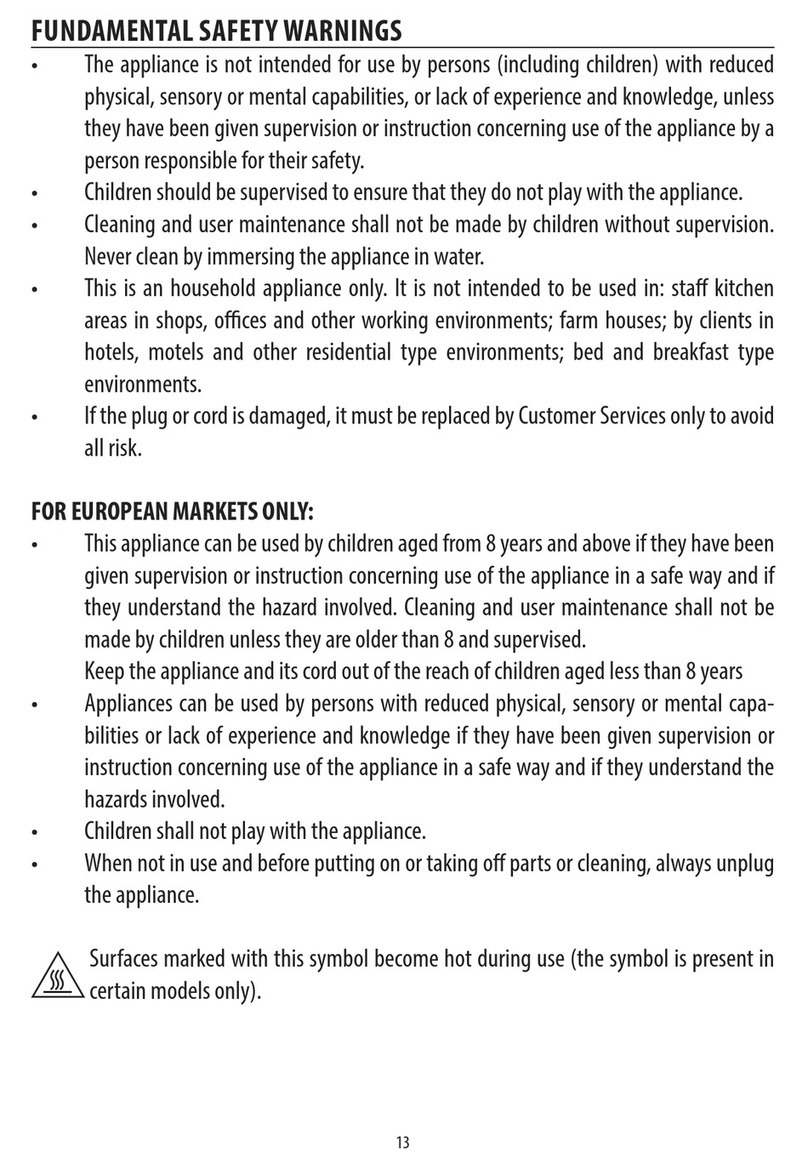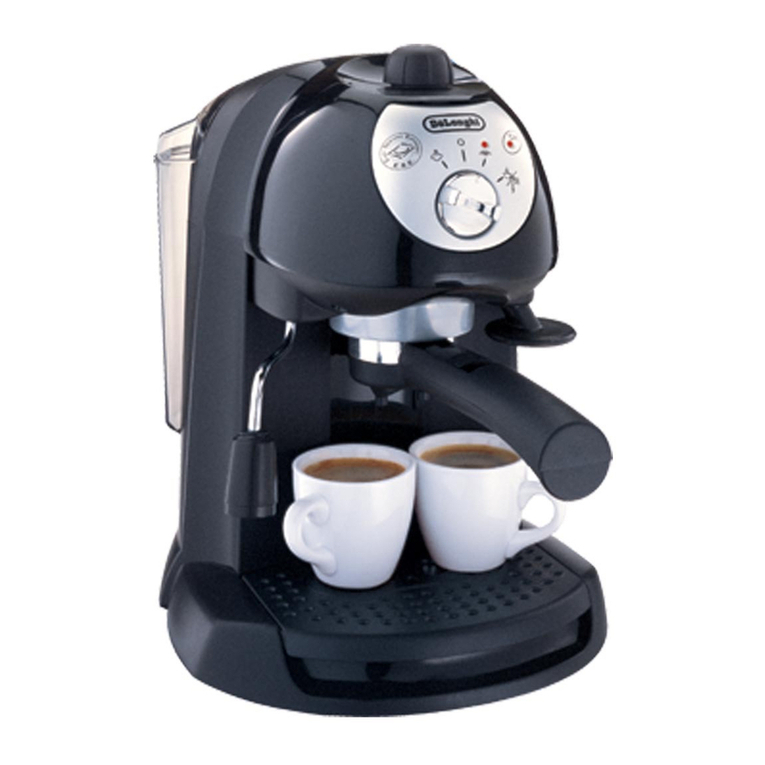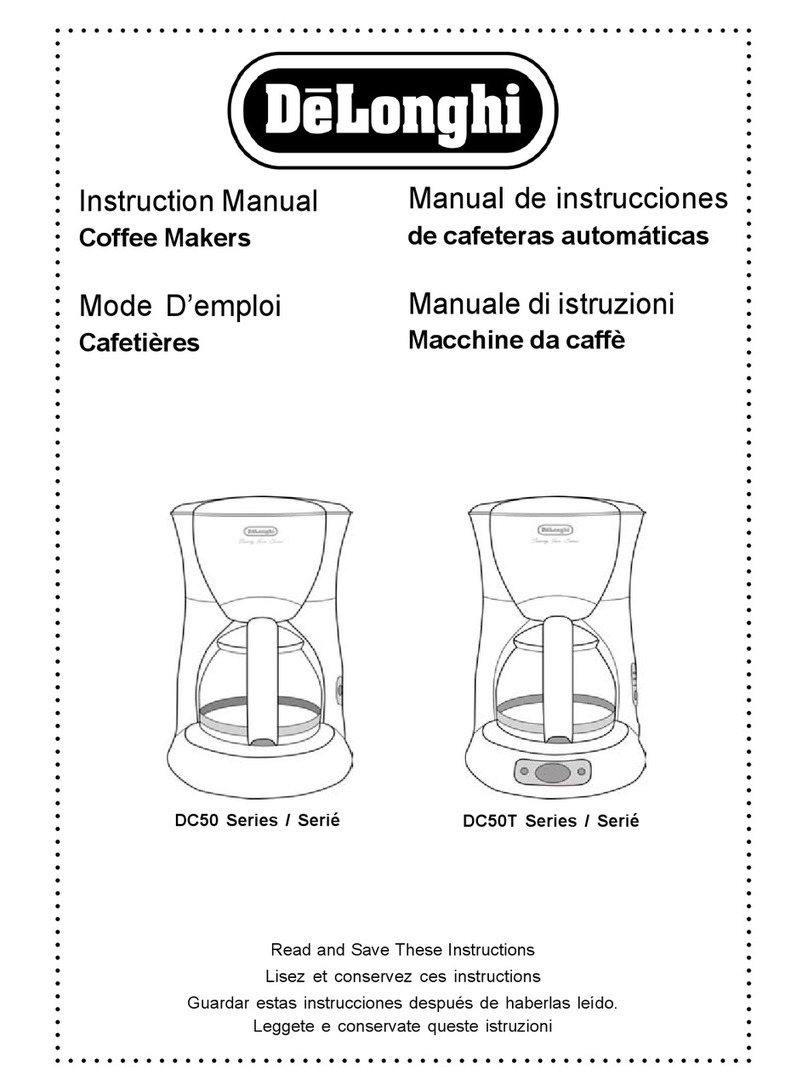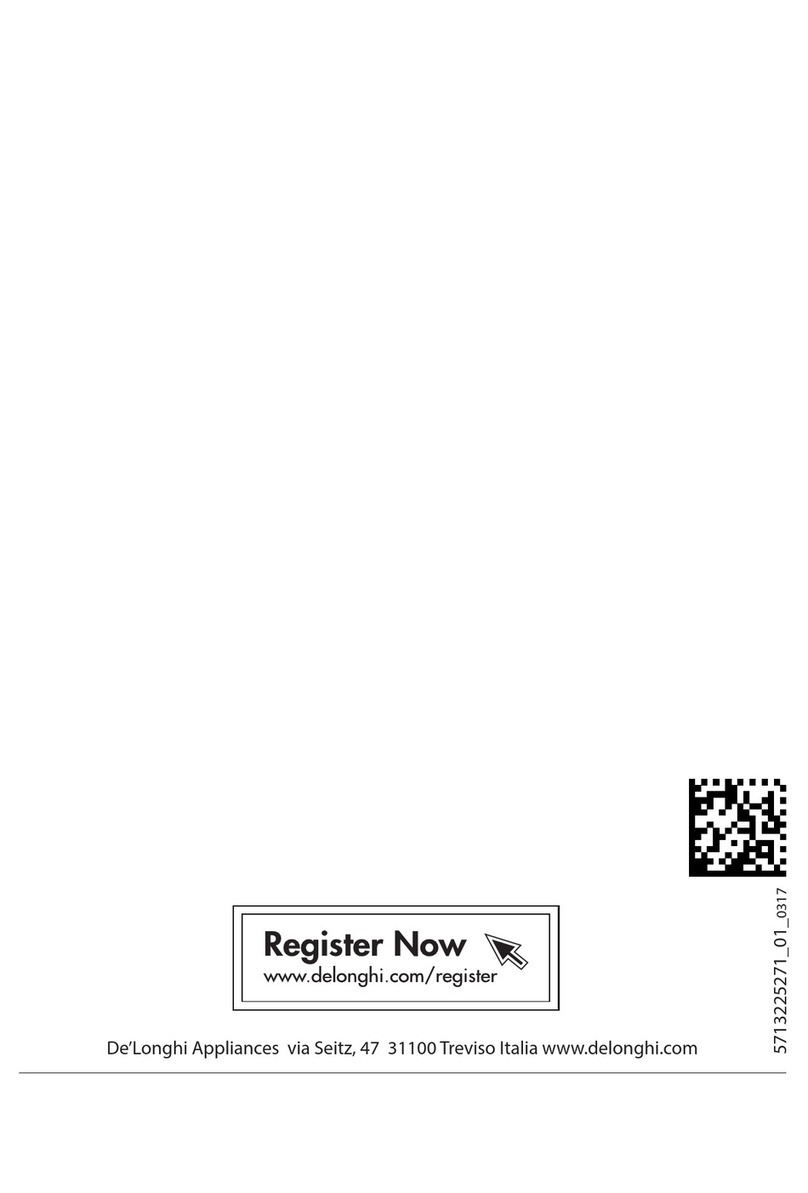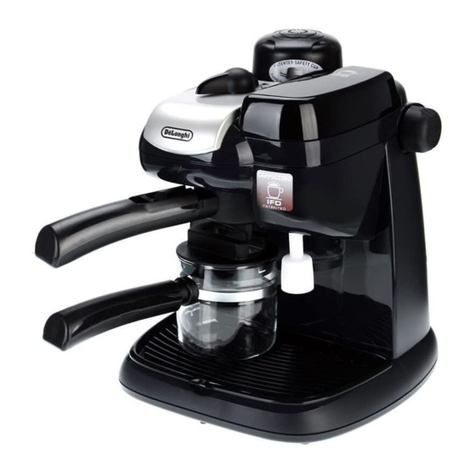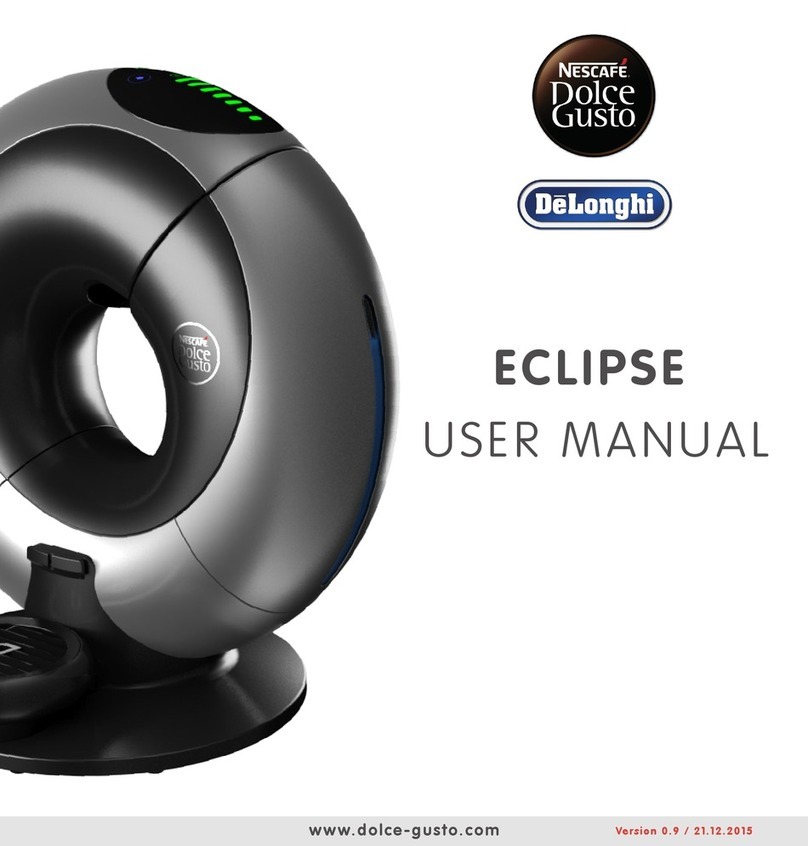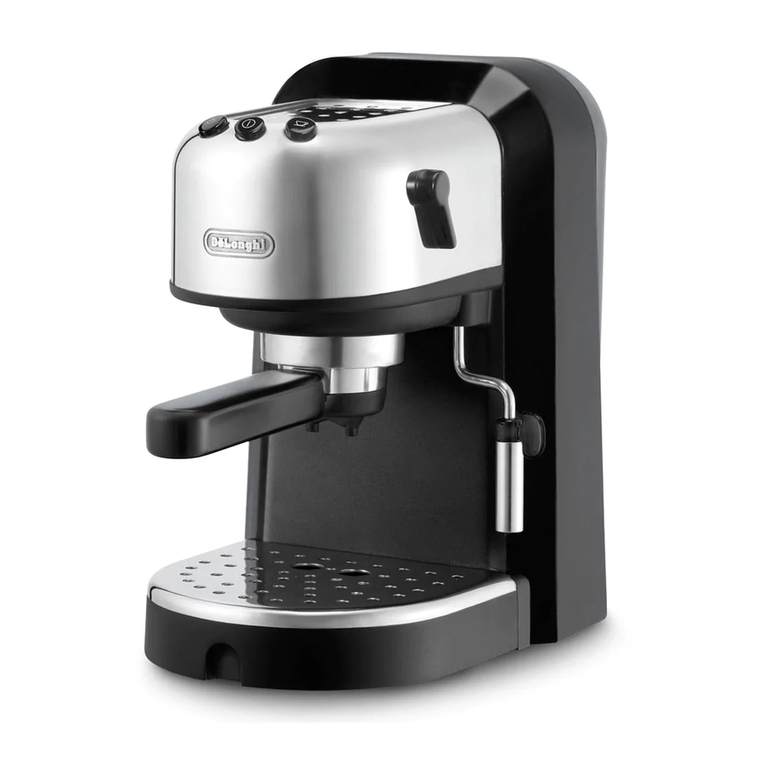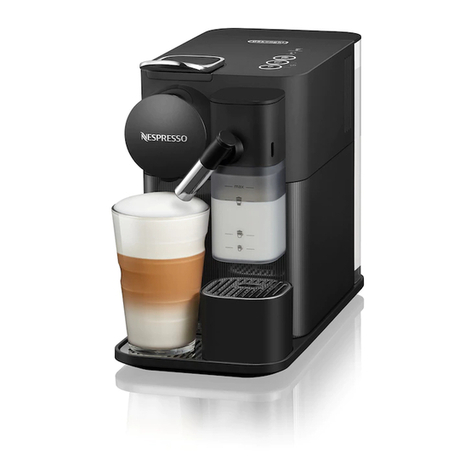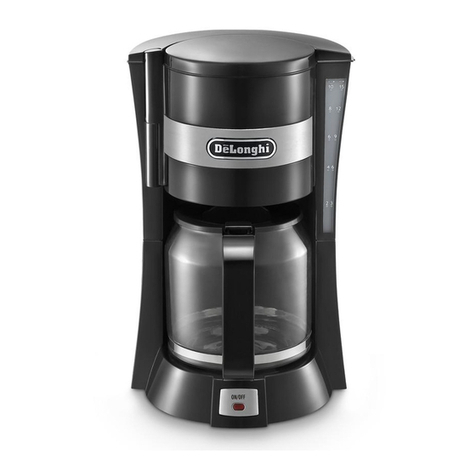6
OPERATING INSTRUCTIONS
2 SAFETY WARNINGS
CAREFULLY READ AND KEEP THESE INSTRUC-
TIONS!
• This machine is designed to “make espresso cof-
fee” and to “heat drinks”: be careful to avoid
scalding from the water and steam jets or by
using the machine incorrectly.
• This appliance is for household use only. All
other use is considered improper and conse-
quently dangerous.
• The manufacturer is not liable for damage cau-
sed by improper, incorrect or unreasonable use
of the appliance.
• During operation, do not touch the hot surfaces
of the appliance. Use the knobs or handles.
• Do not touch the appliance with damp hands or
feet.
• Do not allow the appliance to be used by per-
sons (including children) with psychological, phy-
sical or sensory impairments or with inadequate
experience or knowledge, unless closely super-
vised and instructed by someone responsible
for their safety. Children must be supervised to
ensure they do not play with the appliance.
• In the event of breakdown or faulty operation,
turn the appliance off and do not tamper with
it. For repairs, contact a technical service centre
authorised by the manufacturer only. Request
that only original spare parts be used. Failure to
respect the above may compromise the safety
of the appliance.
• The power cable on this appliance must not be
replaced by the user as this operation requires
the use of special tools. If the cable is damaged
or requires replacing, contact an authorised ser-
vice centre only to avoid all risks.
• Materials and accessories coming into contact
with food conform to EEC directive 1935/2004.
Important information for correct disposal of
the product in accordance with EC Directive
2002/96/EC.
At the end of its working life, the product
must not be disposed of as urban waste.
It must be taken to a special local autho-
rity differentiated waste collection centre
or to a dealer providing this service.
Disposing of a household appliance separately
avoids possible negative consequences for the envi-
ronment and health deriving from inappropriate
disposal and enables the constituent materials to be
recovered to obtain significant savings in energy and
resources.As a reminder of the need to dispose of
household appliances separately, the product is
marked with a crossed-out wheeled dustbin.
3 INSTALLATION
• After unpacking, make sure the appliance is
complete and undamaged. If in doubt, do not
use it. Contact professionally qualified person-
nel.
• Packing elements (plastic bags, polystyrene etc)
must not be left within reach of children as they
may represent a hazard.
• Place the appliance on a work surface far away
from water taps, basins and sources of heat.
•After having positioned the appliance on
the work bench, make sure that there is a
free space of around 5 cm between the
surfaces of the appliance and the side and
rear walls and a free space of at least 20
cm above the coffee maker.
• Never install the machine in environments
where the temperature may reach 0°C or
lower (the appliance may be damaged if the
water freezes).
• Check that the voltage of the mains power sup-
ply corresponds to the value indicated on the
appliance’s rating plate. Only connect the
appliance to a power outlet with a minimum
rating of 10A that is properly earthed. The
manufacturer declines all liability for any acci-
dents caused if the system is not correctly
earthed.
• If the power outlet does not match the plug on
the appliance, have the outlet replaced with a
suitable type by qualified personnel.
• The power cable for this appliance must not be
replaced by the user, in that this operation
requires the use of special tools. In the event of
damage, only contact a service centre authori-
sed by the manufacturer so as to avoid any
risks.
• The water hardness should be set as soon as
possible, following the procedure described in
chapter 10.4.
